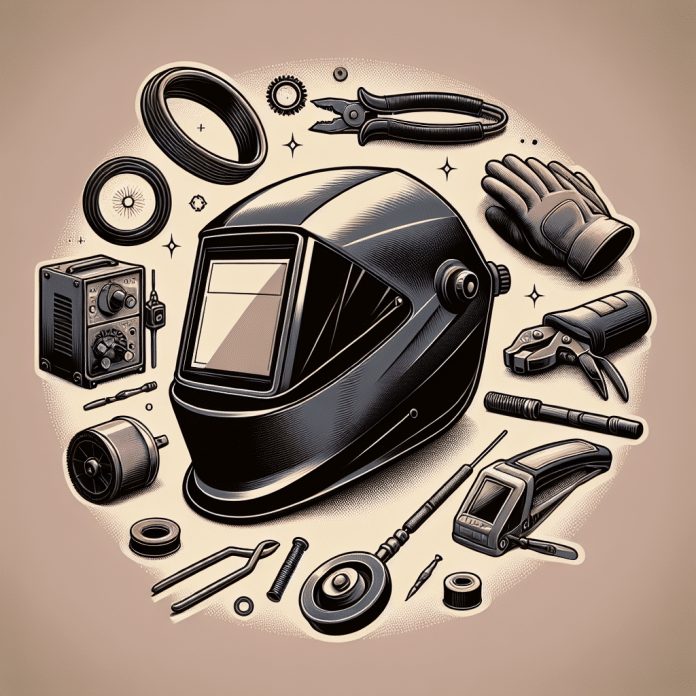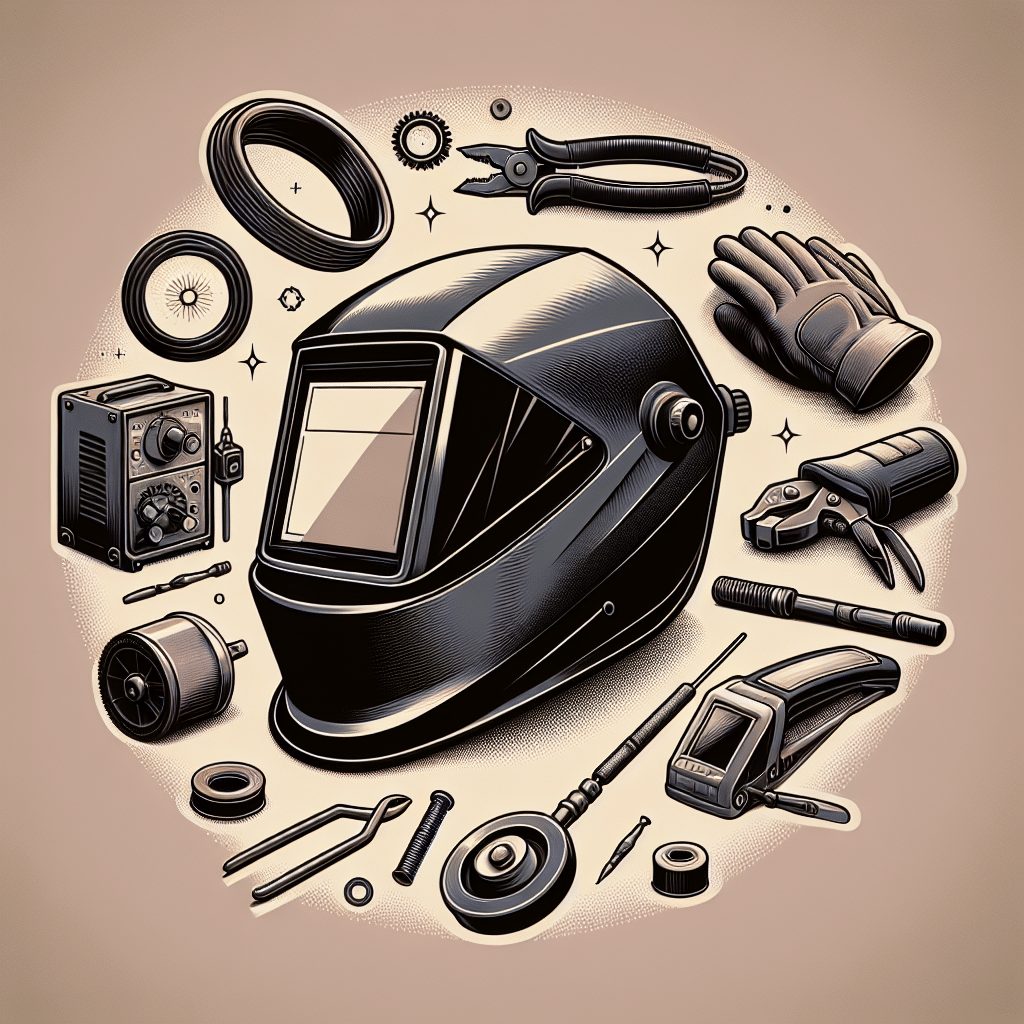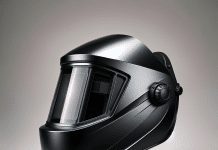Taking good care of your welding helmet is essential to ensure its longevity and optimal performance. In this article, you will discover valuable tips on how to properly maintain and care for your welding helmet. From cleaning and inspecting the lens to storing it in the right way, these simple yet effective practices will help you make your welding helmet last for years to come. So, let’s dive into the essential care and maintenance tips that will keep your welding helmet in top-notch condition!
Review contents
Inspecting Your Welding Helmet
Regularly inspecting your welding helmet is essential to ensure its proper functionality and your safety during welding tasks. Here are some key areas to check during your inspection:
Checking the Overall Condition
Start by examining the overall condition of your welding helmet. Look for any signs of damage, such as cracks, dents, or missing parts. If you notice any issues, it is important to address them promptly to avoid compromising the helmet’s effectiveness.
Examining the Lens
Inspecting the lens is crucial since it directly impacts your visibility and eye protection. Check for any scratches or cracks that may obstruct your view or compromise the lens’s integrity. If you notice any damage, it is advisable to replace the lens immediately to maintain optimal safety while welding.
Inspecting the Headgear
The headgear of your welding helmet plays a vital role in providing comfort and stability. Ensure that all straps, knobs, and adjustments are in good condition and functioning properly. If you notice any loose or damaged parts, consider replacing them to maintain a secure fit and prevent potential accidents.
Testing the Auto-Darkening Feature
If your welding helmet features an auto-darkening lens, it is crucial to test this feature regularly. Activate the auto-darkening mode and observe whether the lens darkens appropriately when exposed to light. If you notice any delays or inconsistencies, it may be necessary to have the sensor checked or replaced.
Cleaning Your Welding Helmet
Proper cleaning is essential for maintaining the longevity of your welding helmet and ensuring clear visibility while working. Here’s a step-by-step guide for cleaning your welding helmet:
Cleaning the Exterior
Start by wiping down the exterior of your helmet with a soft cloth or sponge dampened with a mild detergent solution. Gently remove any dirt, dust, or residue that may have accumulated during your welding sessions. Avoid using abrasive cleaners or harsh chemicals as they may damage the helmet’s surface.
Removing and Cleaning the Lens
To clean the lens, carefully remove it from the helmet according to the manufacturer’s instructions. Clean the lens by gently wiping it with a lens cleaning solution or a mild soap and water solution. Avoid using abrasive materials or excessive force that could scratch or damage the lens. Once cleaned, thoroughly dry the lens before reattaching it to the helmet.
Cleaning the Headgear
The headgear of your welding helmet can accumulate sweat, grime, and grease over time. Remove the headgear according to the manufacturer’s instructions and clean it with a mild detergent solution. Pay special attention to the straps and adjustment mechanisms, ensuring that they are free from any debris or buildup. Once cleaned, allow the headgear to dry completely before reattaching it to the helmet.
Cleaning the Auto-Darkening Lens
If your welding helmet features an auto-darkening lens, it is crucial to clean it properly to maintain its functionality. Follow the manufacturer’s instructions to remove the auto-darkening lens and clean it with a soft cloth or lens cleaning solution. Take care to avoid touching the sensors or any delicate components. Once cleaned, reattach the lens securely to the helmet.
Proper Storage of Your Welding Helmet
Proper storage is vital to protect your welding helmet from damage and ensure its longevity. Consider the following tips when storing your helmet:
Keeping it in a Dry and Clean Area
Choose a designated area for storing your welding helmet that is dry and clean. Moisture and dust can lead to corrosion, affecting the helmet’s performance and lifespan. Avoid storing your helmet in areas with high humidity or temperature fluctuations.
Protecting the Lens
To prevent scratches or damage to the lens while in storage, consider using a protective lens cover or applying a removable protective film. This additional layer of protection will help maintain the clarity and integrity of the lens over time.
Storing the Helmet Properly
When not in use, store your welding helmet in a secure and stable position. Avoid stacking heavy objects on top of it or placing it in a location where it may be at risk of falling or being subjected to impact. Storing the helmet properly will minimize the chances of accidental damage.
Replacing Parts and Components
Over time, certain parts and components of your welding helmet may wear out or become damaged. It is important to replace these parts promptly to ensure the helmet’s functionality and your safety. Here are some common parts that may require replacement:
Replacing the Lens
If you notice significant scratches, cracks, or distortion on your lens, it is crucial to replace it immediately. A damaged lens can compromise your visibility and eye protection, putting you at risk during welding tasks. Refer to the manufacturer’s instructions for guidance on replacing the lens correctly.
Replacing the Headgear
If the headgear of your welding helmet becomes loose, damaged, or uncomfortable, consider replacing it. A secure and properly functioning headgear is essential for maintaining a stable and comfortable fit while welding. Follow the manufacturer’s instructions for replacing the headgear and ensure that all adjustments are properly made.
Replacing the Sweatband
The sweatband in your welding helmet absorbs moisture and provides additional comfort. Over time, the sweatband may wear out or become soiled. If the sweatband no longer provides sufficient cushioning or has an unpleasant odor, replace it with a new one. Follow the manufacturer’s instructions for removing and installing the sweatband properly.
Replacing the Batteries
If your welding helmet is battery-powered, regularly check the battery life and replace them as needed. Always use the type and brand of batteries recommended by the manufacturer. Proper battery replacement ensures that the auto-darkening feature and other electronic functions of your helmet operate correctly.
Protecting the Lens
The lens of your welding helmet is a critical component that requires special care and protection. Follow these tips to keep your lens in pristine condition:
Applying Protective Film
Consider applying a protective film to the lens surface to guard against scratches, splatter, and debris. These films are designed to be easily removed and replaced, ensuring the lens stays protected during welding tasks. Remember to clean and dry the lens thoroughly before applying the protective film.
Using Lens Covers
When your welding helmet is not in use, consider utilizing lens covers to shield the lens from dust, debris, and accidental scratches. These covers typically fit snugly over the lens and provide an additional layer of protection. Ensure the lens is clean before attaching the cover to avoid trapping any particles.
Avoiding Scratches
To prevent scratches on the lens, avoid touching it directly with your hands or any abrasive materials. When cleaning the lens, use soft, lint-free cloths or lens cleaning solutions specifically designed for welding helmets. Additionally, be cautious when handling your helmet to avoid accidental impacts or drops that may lead to lens damage.
Maintaining the Auto-Darkening Feature
The auto-darkening feature in your welding helmet is a valuable asset that requires proper maintenance to ensure its effectiveness. Follow these steps to maintain the auto-darkening feature:
Calibrating the Sensors
Regularly calibrate the sensors of your auto-darkening lens to ensure accurate light detection. Refer to the manufacturer’s instructions on how to perform this calibration properly. By keeping the sensors properly calibrated, you can rely on the auto-darkening feature for consistent and reliable protection.
Checking the Battery Life
If your welding helmet is battery-operated, it is essential to regularly check the battery life. A low or depleted battery can affect the speed and reliability of the auto-darkening function. Follow the manufacturer’s recommendations for battery replacement and always have spare batteries on hand.
Upgrading Firmware (if applicable)
In some cases, manufacturers release firmware updates for welding helmets with advanced features. If your helmet supports firmware upgrades, stay updated with the latest releases and follow the manufacturer’s instructions to upgrade the firmware. This ensures that you have access to any performance enhancements or bug fixes provided by the manufacturer.
Adjusting and Fitting Your Helmet
Achieving a proper fit and adjustment is crucial for comfort and safety while wearing your welding helmet. Follow these steps to ensure a secure and comfortable fit:
Properly Adjusting the Headgear
Before wearing your welding helmet, adjust the headgear to fit your head properly. Ensure that the straps are tightened enough to keep the helmet securely in place without causing discomfort or pressure points. Follow the manufacturer’s instructions for adjusting the headgear to achieve an optimal fit.
Ensuring a Secure Fit
Once you have adjusted the headgear, double-check the stability and security of the helmet. Gently shake your head and perform some quick movements to ensure that the helmet stays in place. If you notice any excessive movement or slippage, make further adjustments to improve the fit.
Testing the Helmet’s Stability
It is crucial to test the stability of your welding helmet before starting any welding tasks. Bend over, move your head up and down, and perform various motions to ascertain that the helmet remains in the correct position. A stable helmet ensures uninterrupted visibility and protection throughout your welding activities.
Protecting the Helmet from Heat and Sparks
Welding processes create intense heat and sparks that can potentially damage your helmet. Take the following precautions to protect your helmet:
Avoiding Direct Exposure
When welding, position yourself in a way that avoids exposing your helmet directly to the intense heat and sparks. Consider adjusting your body and welding angle to minimize the risk of heat damage to your helmet. This practice helps extend the lifespan of your helmet and prevents any unnecessary harm.
Using Heat-Resistant Materials
If your welding tasks involve working in close proximity to extreme heat sources, consider using heat-resistant materials to shield your helmet. Welding blankets or screens can provide an added layer of protection, safeguarding your helmet from excessive heat and potential damage.
Covering the Helmet During Welding
During welding intervals or breaks, cover your helmet with a welding-specific helmet cover or a heat-resistant cloth. This practice prevents sparks, slag, or other particles from accumulating on the helmet’s surface and potentially causing damage. It also minimizes the risk of scratches or impacts that may occur when the helmet is left exposed.
Avoiding Impact and Dropping Damage
Accidental impacts or drops can significantly impact the functionality and durability of your welding helmet. Follow these guidelines to minimize the risk of impact damage:
Handling the Helmet with Care
Handle your welding helmet with the utmost care to avoid accidental impacts. Always place the helmet in a safe spot when not in use and refrain from subjecting it to unnecessary rough handling. By treating your helmet gently, you can prevent potential damage that may affect its performance.
Using Protective Bags or Cases
Consider using a dedicated protective bag or case to store and transport your welding helmet. These accessories provide an extra layer of protection against impacts, scratches, and dust. Choose a bag or case that fits your helmet securely and offers sufficient padding for optimal protection.
Avoiding Impact and Falls
Avoid situations that may lead to accidental impact or falls of your welding helmet. Be mindful of your surroundings, such as low-hanging objects or crowded work areas, to prevent collisions that may damage the helmet. By being cautious and aware, you can reduce the risk of incidents that could affect your helmet’s integrity.
Regularly Checking and Testing
Regular inspections and testing are essential to ensure the ongoing functionality and safety of your welding helmet. Consider these practices to keep your helmet in top condition:
Performing Regular Inspections
Regularly inspect your welding helmet for any signs of wear, damage, or malfunction. This includes checking for cracks, loose parts, or faded markings. By spotting issues early on, you can address them promptly and prevent potential safety hazards.
Testing the Helmet’s Functions
Regularly test the functioning of your helmet’s key features, such as the auto-darkening lens, headgear adjustments, and overall stability. Confirm that the auto-darkening feature responds correctly to light exposure, the headgear remains securely in place, and the helmet provides adequate protection. Testing these functions ensures that your helmet performs optimally during your welding tasks.
Addressing Issues Promptly
If you notice any issues or abnormalities during inspections or testing, it is crucial to address them promptly. Contact the manufacturer or a professional welding equipment technician for guidance on troubleshooting and resolving the problems. Addressing issues promptly helps maintain the effectiveness and reliability of your welding helmet.
By following these care and maintenance tips, you can prolong the lifespan and ensure the optimal performance of your welding helmet. Regular inspections, proper cleaning, and responsible storage will keep your helmet in top shape, providing you with the necessary protection and comfort for all your welding endeavors. Remember, a well-maintained welding helmet is your best ally in a safe and successful welding experience.




























